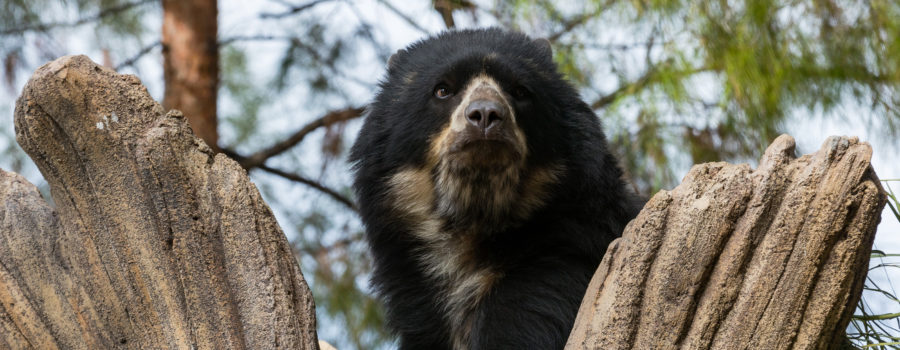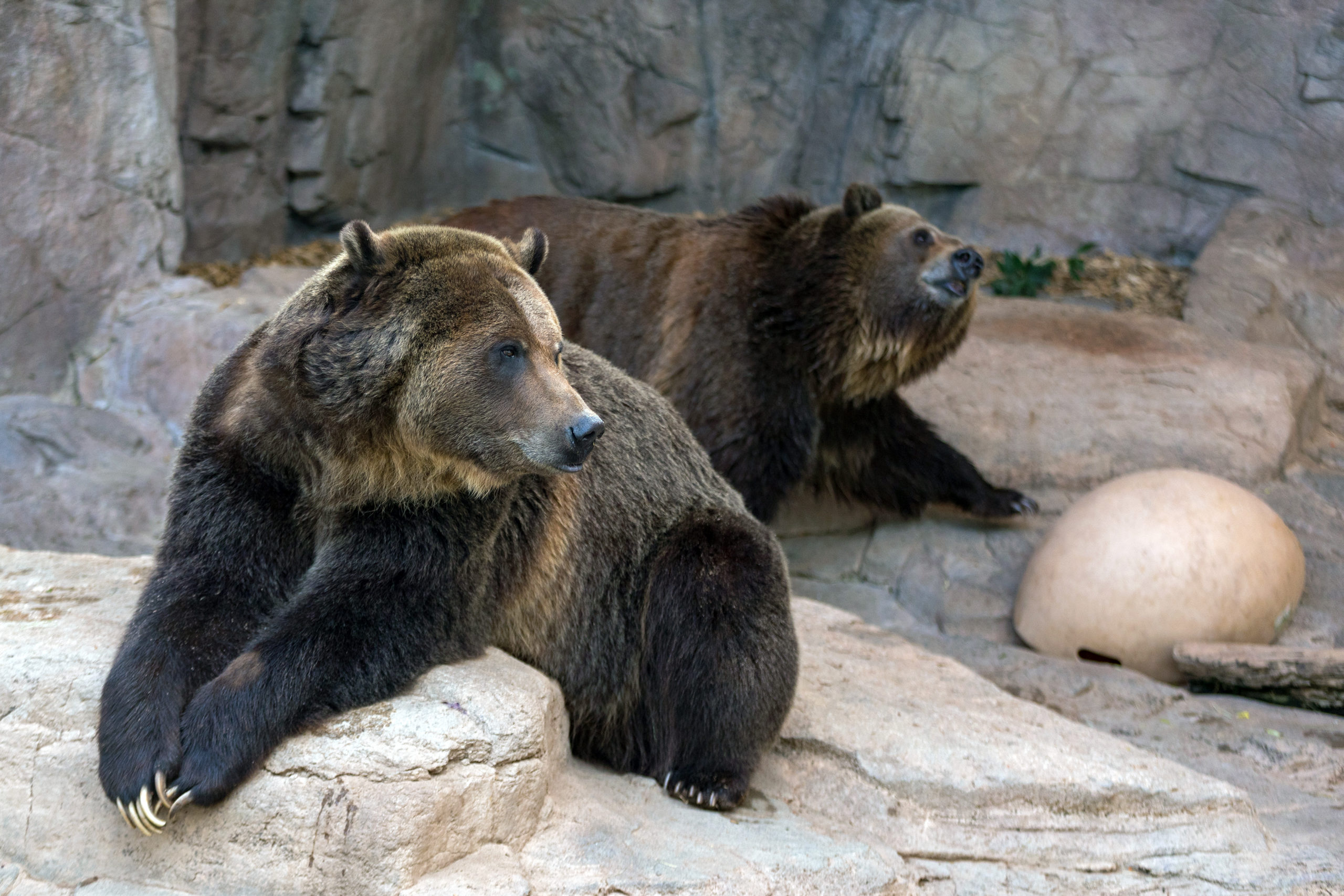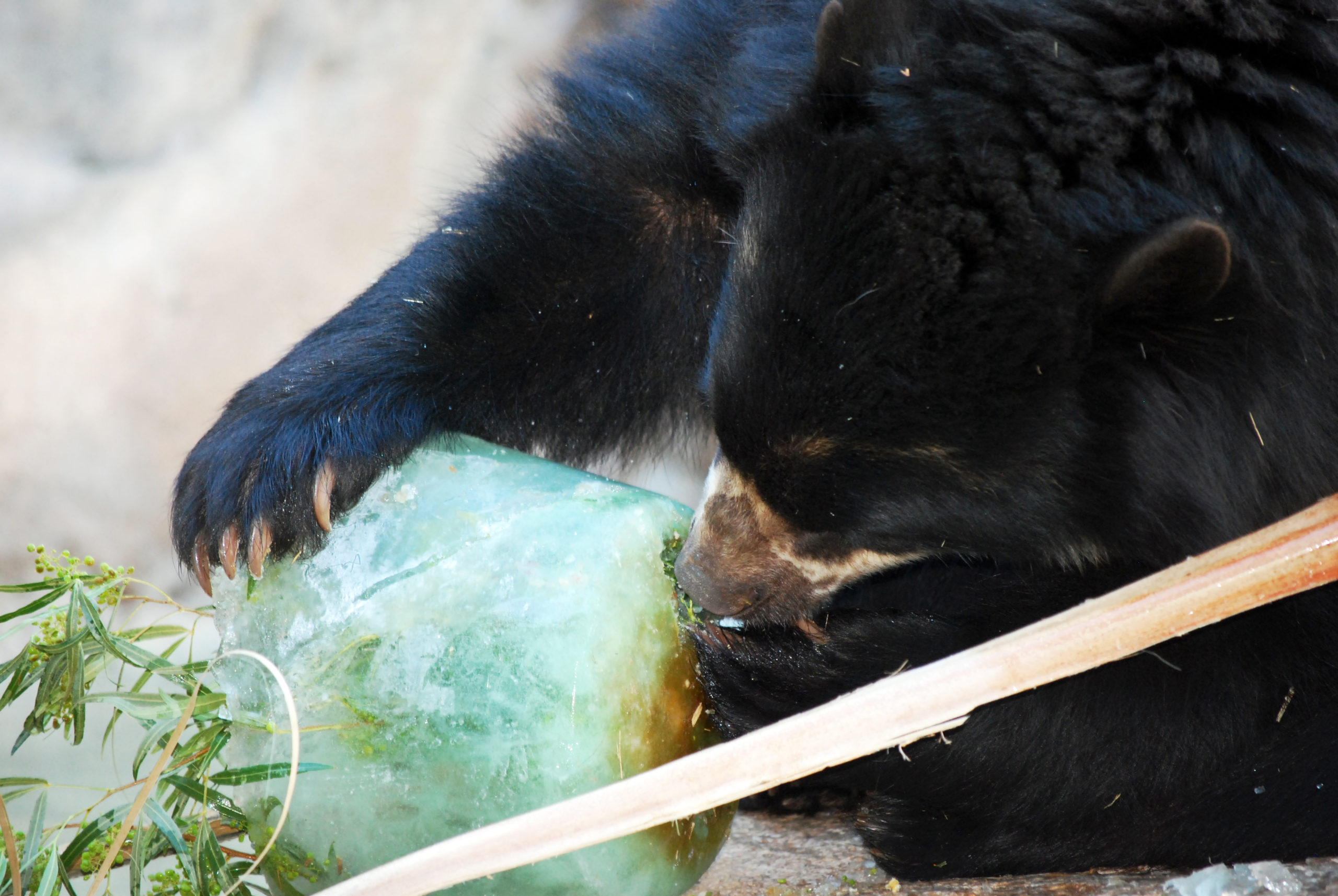Andean bears are also known as “spectacled” bears due to the tan coloration often found around their eyes, resembling spectacles or eyeglasses. These tan markings may also continue onto the chests of these bears, allowing researchers in the wild to identify individuals, as well as giving the bears the scientific name of Tremarctos ornatus, or “decorated bear”.
Diet: Like other bears, Andean bears are omnivores. Most of their diet, however, consists of herbivorous material such as bromeliads, palm trees, cacti, and flowers. Only about 5% of their diet consists of meat, mostly small mammals. This makes them one of the most herbivorous bears, second only to the giant panda. Seasonally, they will eat large amounts of fruit, allowing them to play an important role in forest ecology by spreading seeds across long distances when they excrete the seeds in their droppings.
In the Wild: Andean bears are the only bears found in South America. They are arboreal, using their long claws to climb up trees, where they build leafy nests for resting and feeding. This, coupled with their elusive nature, makes it difficult for researchers to study them. Because they are rarely seen, it was believed they were nocturnal but now researchers think they are mainly diurnal. Andean bears do not hibernate because food is available year round in the tropical regions where they live.
Conservation issues/actions: Habitat loss due to deforestation and climate change are major threats to Andean bears. Mining, farming, and lumber exploitation, as well as the building of roads that comes with these uses, have led to the loss of 90% of their original habitat. This habitat loss has caused bears to occasionally feed on the agricultural crops nearby, leading to retaliation killing by local farmers. Mountain biomes are extremely vulnerable to a changing global climate. The tropical Andes is predicted to see a reduction in rainfall, which will affect species dependent on humidity, such as bromeliads, a major food resource for Andean bears.
At the Zoo:
Since Andean bears are excellent climbers, they can often be found on top of (or inside) the large artificial tree of their habitat. Andean bears are also great swimmers and can be seen cooling off in the pool during warm summer days. Reid Park Zoo participates in the Andean bear Species Survival Plan managed by the Association of Zoos and Aquariums and supports field research of Andean bears. We help provide important equipment, like camera traps, to a University of Arizona researcher who is studying habitat use and how to mitigate human-bear conflict in Colombia.



